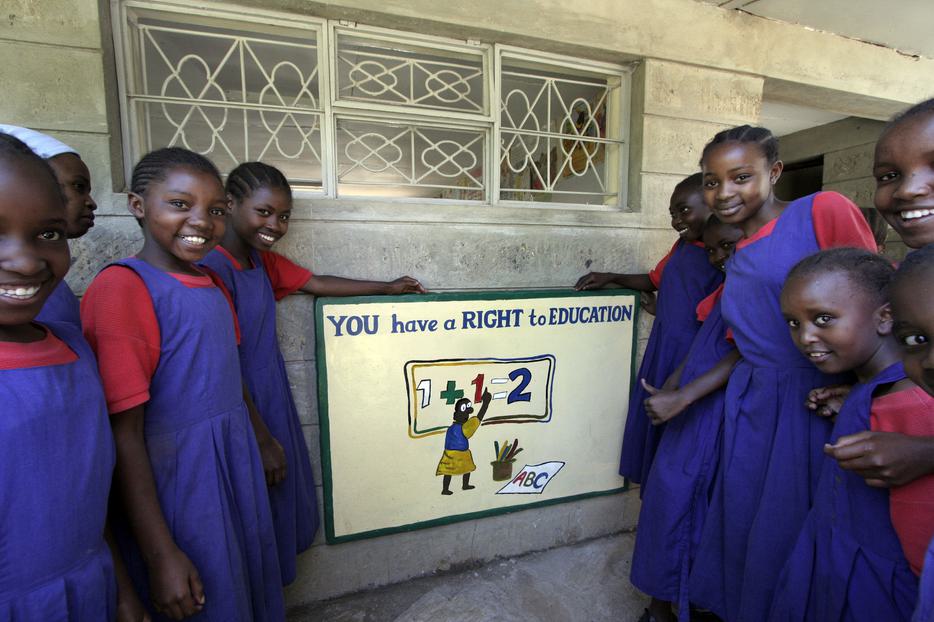SGI Quarterly

An educator and writer, Nancy Flowers has worked to develop Amnesty International’s education program and to establish networks of human rights educators in Africa, Asia and Eastern Europe.
The mandate for human rights education is unequivocal—you have a human right to know your rights. The Preamble to the Universal Declaration of Human Rights (1948) exhorts “every individual and every organ of society” to “strive by teaching and education to promote respect for these rights and freedoms.”
Both a teacher and a human rights activist, 30 years ago I had never heard of human rights education. I had kept my professional life quite separate from my activism, but in the mid-80s I unexpectedly became the first national coordinator for human rights education for Amnesty International USA, a position which combined these two passions.
In the late 1980s, as the Soviet Union began to erode, newly independent nations began to rewrite their constitutions and reform their educational systems. Because I knew the human rights framework and I knew education, I was able to collaborate with ministry officials, education professors, textbook writers and classroom teachers as they worked to introduce democracy, human rights and citizenship education into their national curricula. This new work, which took me to Russia and across Central Europe from Estonia to Albania, forced me into the greatest learning curve of my life and provided me with a whole new career. Although I left the school where I had taught literature for two decades to become a full-time consultant for human rights education, I never felt I had left teaching. I had only exchanged my small classroom for more challenging venues in the Middle East, Asia, Africa and Latin America.
Because human rights education was a new field, few curriculum resources existed at first. Part of my new profession included developing learning materials on a variety of human rights topics including the rights of children, women and people with disabilities.

A girls’ school for former street children in Kenya. [Photo credit: © Sean Sprague/Uniphoto]
Human Rights Education for Children
Human rights education should be a basic component of every child’s education. The Convention on the Rights of the Child (1990) emphasizes the importance of human rights education as: “preparation . . . for responsible life in a free society, in the spirit of understanding, peace, tolerance, equality of sexes, and friendship among all peoples, ethnic, national and religious groups and persons of indigenous origin.”
International bodies such as UNESCO, UNICEF and the Council of Europe, children’s NGOs and a growing number of countries enthusiastically promote human rights education for children. Their programs teach the values of equality, human dignity and respect for others as well as skills such as cooperation, conflict mediation and standing up for one’s rights and those of others.
The content must, of course, be adapted to the age and circumstance of the child, but human rights education cannot begin too early. Some of the most inspired and inspiring human rights educators teach preschool children nonviolence, empathy, fairness and the responsibility to contribute to the betterment of the community. Without ever using such abstract nouns, they create an environment where those human rights values are a way of life. They teach these things by living them, the deepest teaching of all.
By the time a child begins school, many cultural norms and values have already been integrated, for better or for worse. It is much harder to effect meaningful, lasting change of attitude in adolescents. They may gain a solid understanding of the mechanics of human rights without applying the principles to their own behavior or that of their community.
Rather than listening passively, children should be actively engaged in their own learning.
Qualities like intellectual curiosity, moral imagination and critical thinking can be cultivated at an early age. They can also be squelched.
Too often adults learn about human rights in terms of violations, acts of inhumanity that draw intense if fleeting media attention. Especially with children, however, human rights should be presented as positive standards for living with others. Inherently holistic, human rights education cannot effectively be isolated as one of many “subject areas” in the curriculum. Ideally, the child’s human rights learning is reinforced by every aspect of daily experience, whether in the home, the school community or beyond.
Because such ideal consistency is seldom if ever realized, an important aspect of human rights education for children involves coping with contradictions in values. A child who understands that everyone has rights and who has a sense of social responsibility is far more likely to be capable of reflection and analysis about conflicting beliefs. Such a child may ultimately become a citizen who can and will take a stand against injustice.
Methodologies
Teaching about human rights is not enough. For learning to have practical benefit, children need to learn in human rights, in an environment that models the same values of respect, equality and dignity. Rather than listening passively, children should be actively engaged in their own learning, working cooperatively in groups, building consensus and participating democratically with peers. Activities should engage children in reflection, analysis and critical thinking.
Furthermore, the teacher will want to teach for human rights. Human rights education should build the skills for practical application of human rights learning. What do I do when someone’s opinion is stifled? How can I stop bullying? How can I resolve conflicts peacefully?
Children often extrapolate their first introduction to rights to think that anything they want—candy, time off from school, late bedtimes—is a right. It is always important to explore the distinction between “what I want” and “what I need,” as well as what responsibility comes along with each right. For example, if I have the right to my own opinion, what is my responsibility toward others? These are not simple lessons and need much repetition and reinforcement by experience.
I learned the importance of including members of the community, who often were wary of this new subject matter but also curious and eager to learn. We encouraged community leaders and especially parents to observe our trainings and the master classes developed by participants so they could see for themselves what was going on. Sometimes they requested human rights seminars for themselves.
Challenges and Promise
Human rights education has some inherent challenges. First among them is the potential conflict between human rights values and local cultural norms and realities. The Child Rights Convention endorses “respect for the child’s parents, his or her own cultural identity, language and values.” But what if the parents’ values include, for example, privileging boys over girls, or refusing their maturing children the freedom of conscience, expression or privacy, rights also guaranteed by the Convention? Often parents and teachers are unfamiliar with human rights and may oppose them as an alien innovation. Sometimes, teachers implementing human rights education in their schools meet fierce opposition from political or religious leaders who feel their traditional authority threatened.
As economic integration and electronic communications bring the world closer together, the human rights framework has become a unifying moral force that can transcend national boundaries and empower ordinary people to hold their governments accountable for protecting and promoting their rights. However, in the words of Eleanor Roosevelt, human rights do not begin on a sweeping global scale but, “in small places, close to home . . . Unless these rights have meaning there, they have little meaning anywhere.”
This is where human rights education begins: close to home, day by day, child by child.
Related Content


